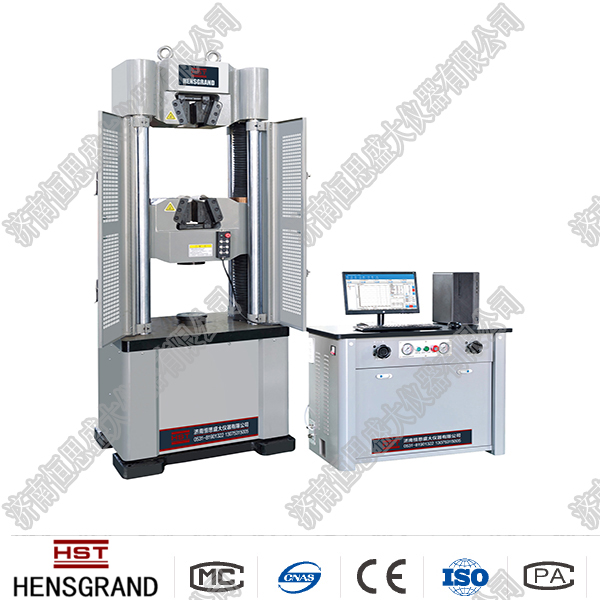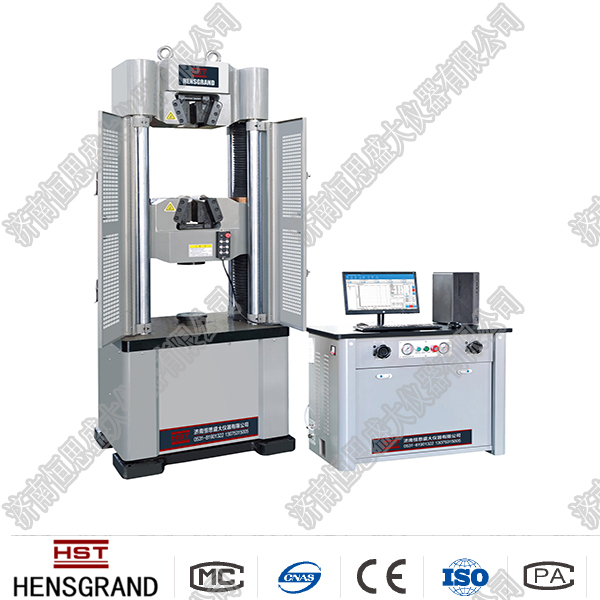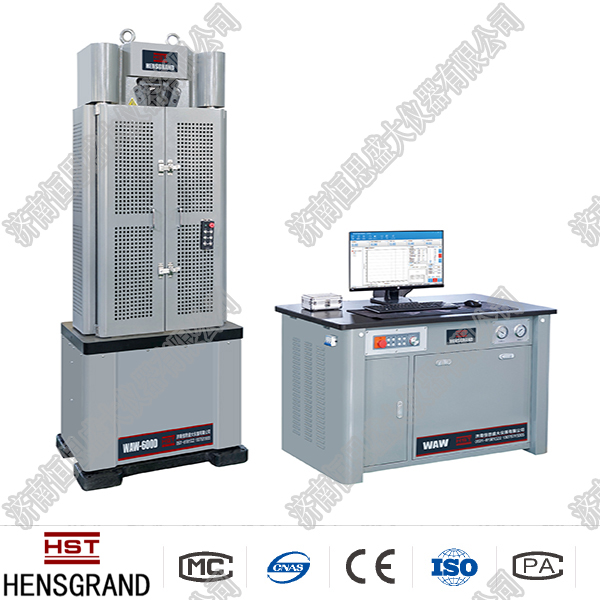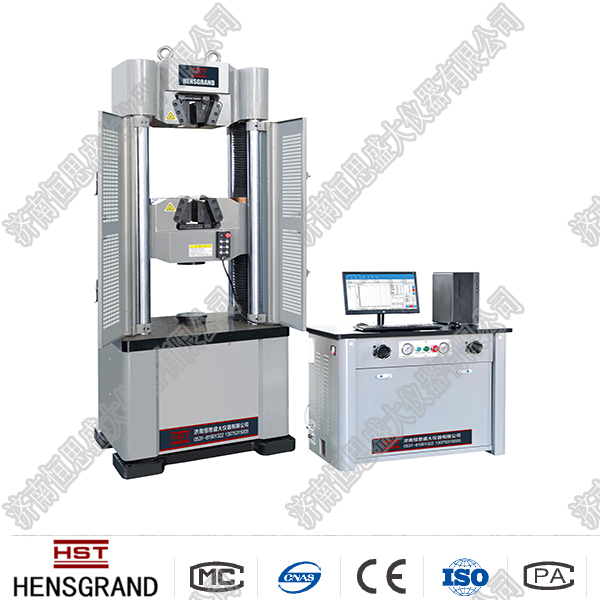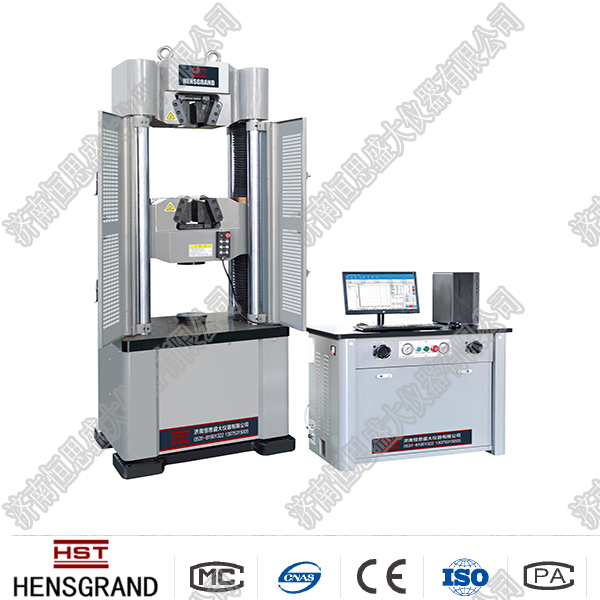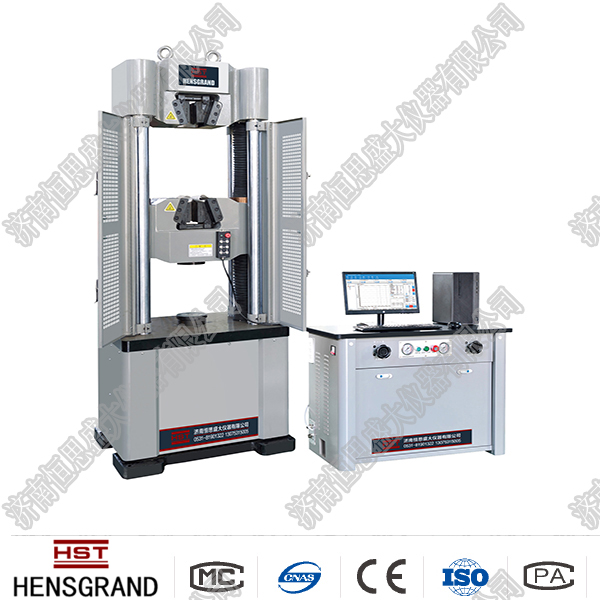Company News
The most common memory used in plastic testing of single-arm electronic universal testing machine
Release time:2018-11-23 source:Jinan Hengsi Shanda Instrument Co., Ltd. Browse:
The instrument that is commonly used in plastic testing is a single-column electronic tensioner with rack load capacity of 1000 to 5000 Newtons. For fill and reinforced plastics, instruments with rack load capacity of 20,000 Newtons are often required.
If the user wants to buy an instrument with a load capacity that is far beyond the needs, he will not only pay more cash and sacrifice some accuracy, but also spend some on testing time. Larger instruments run slower. For example, instruments with a rack load capacity of 5000 Newtons usually operate at a speed of 100 mm/min, while instruments with a 5000000 Newtons run at a speed of 20 mm/min.
Single-column or door-type?
The amount of load required depends on the type of material tested and is one of the important issues to consider when deciding whether to choose a single-column or a gantry. Also consider whether an environmental partition is needed to test at controlled temperatures. The door type is high, allowing larger samples and larger heating cabinets to be inserted between the pillars. If you will perform any compression test on the foam, as the specimens are often large, a portal device is generally required.
The gantry instrument is relatively hard, so the deflection is one-half of that of a single arm during the test. It's the difference in cost. The price of a single-column electronic tensioner may be only 20,000-30,000 yuan, while the price range of the door style is usually between 30,000 and 60,000 yuan. These prices are only for instruments. Computer-type requires computer costs, and fixtures are another separate cost, as is the same as installation and training. If a heating chamber with a special temperature is required, it is generally priced between 8,000 and 20,000 yuan.
Progress in software
The electronic tensioner has a relatively mature design in electromechanical aspects. The new development is in control software. Advanced computer software provides higher productivity and accuracy and is easier to use. These software adds a certain degree of repeatability, which has never been seen before.
For high-end users who engage in scientific research, they cannot just rely on readings at break points. Researchers can now discover what is happening through physical properties tests. Has the material elongated or deformed before breaking? Is its deformation proportional to stress? The answers can help them evaluate materials, determine safety margins, and better simulate terminal usage. For general businesses, this data is not needed.
The new computer software enables testing, data collection, analysis, report output, data storage and recovery to be automatically completed. The user can make the instrument run at a certain load rate, and the system will automatically adjust the speed of the beam.
The new software also allows users to obtain the true value of tension during the test through the position sensor, which accurately measures the distance the beam has moved. Dividing the change in the length of the sample by its original length results in an automatic strain result. The new software can also realize automatic verification and calibration of the load unit when replacing the sensor. It "reads" the electronics on the load unit and establishes parameters, no longer requires mechanical corrections previously completed by the operator.
Newer software with faster data acquisition can more accurately obtain load peaks and check tensile/strain curves in more detail at higher speeds or when load fluctuates. Typical data acquisition speeds are about 50Hz, (50 readings per second), although sampling speeds can reach 5kHz.
Driven electronic tensioners are cheaper than instruments with digital control panels that have been used for more than 10 years. New computer styles have simpler controls and often do not use digital displays with graphical readings. Electronic tensioners based on microcomputers now drive the entire operation because they do not use digital displays and some electronic components, thus reducing the cost.
- Previous article:WDW-S geoeconomic hydraulic universal material testing machine
- Next article:Main composition - hydraulic universal testing machine
Recommended productsPRODUCTS


















